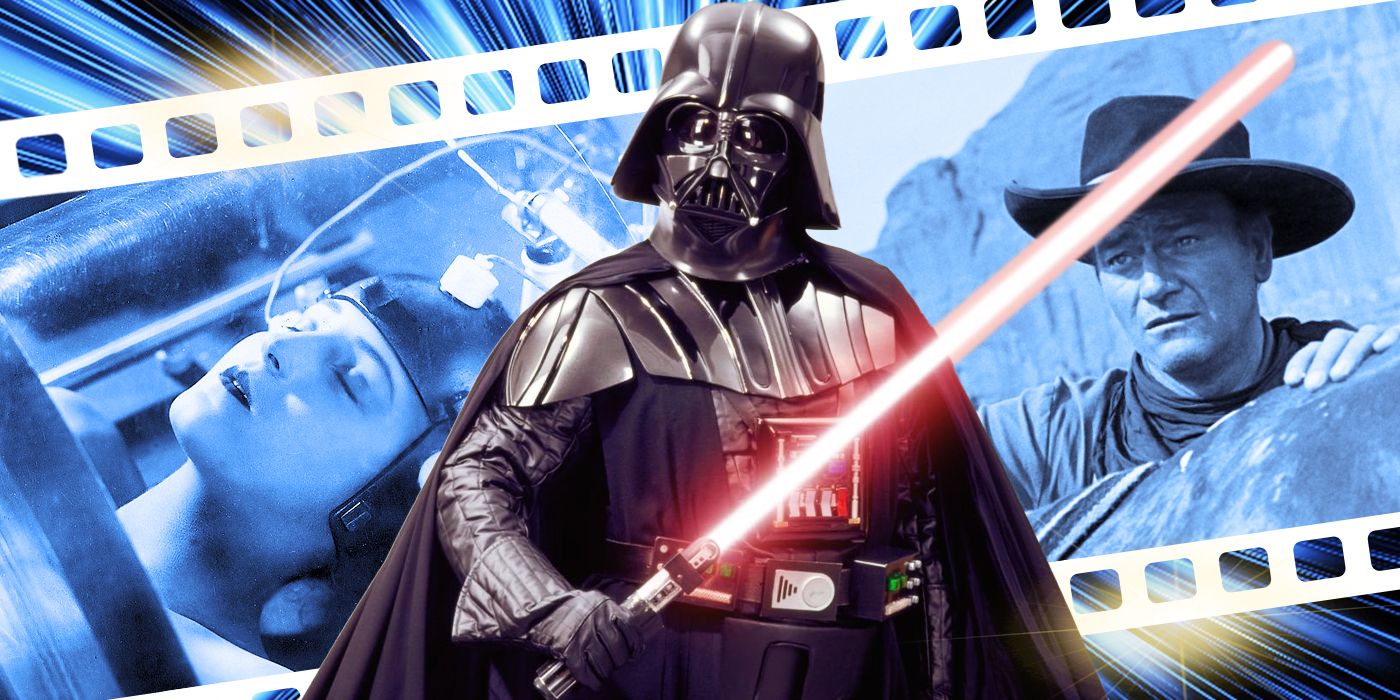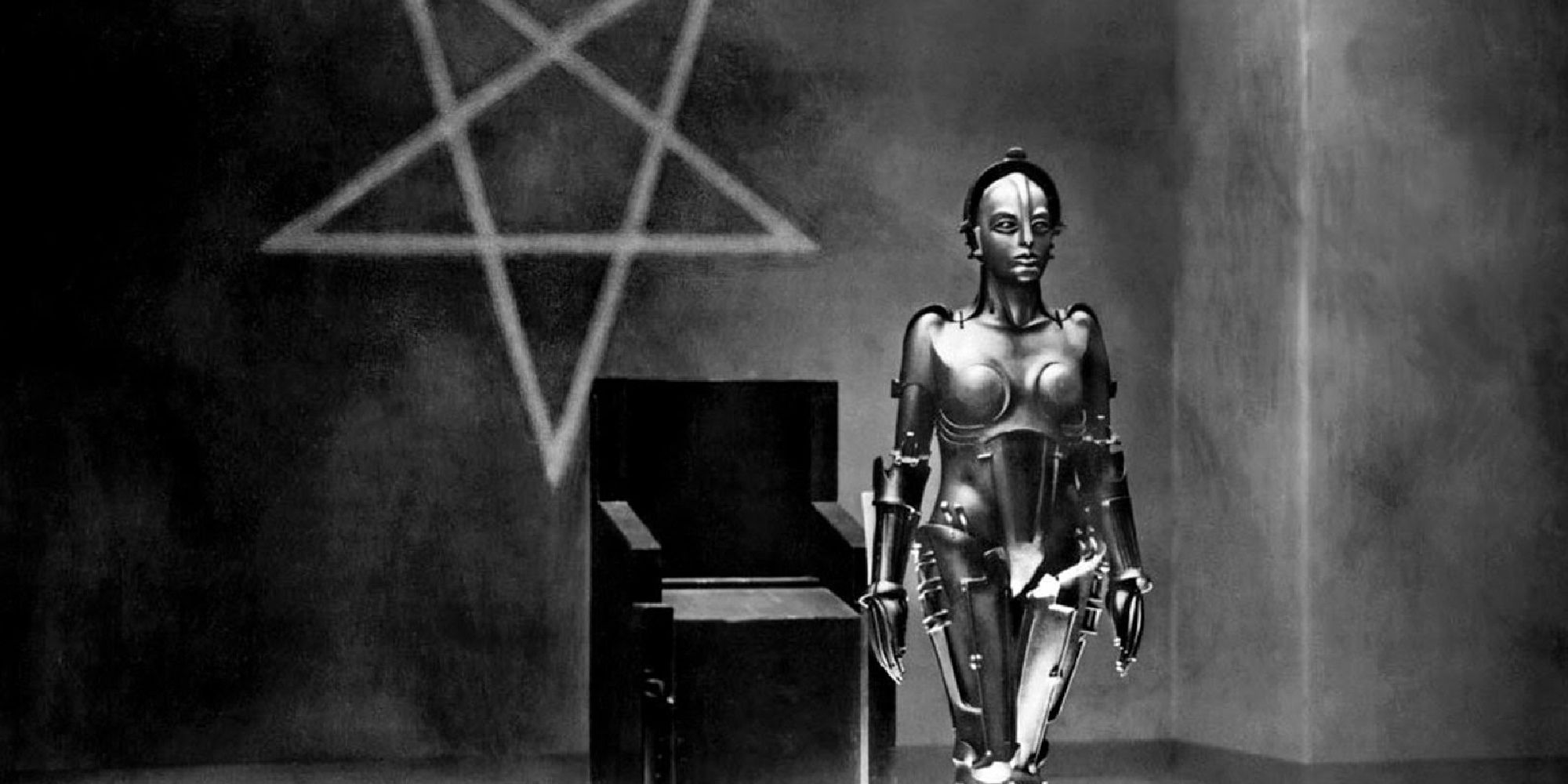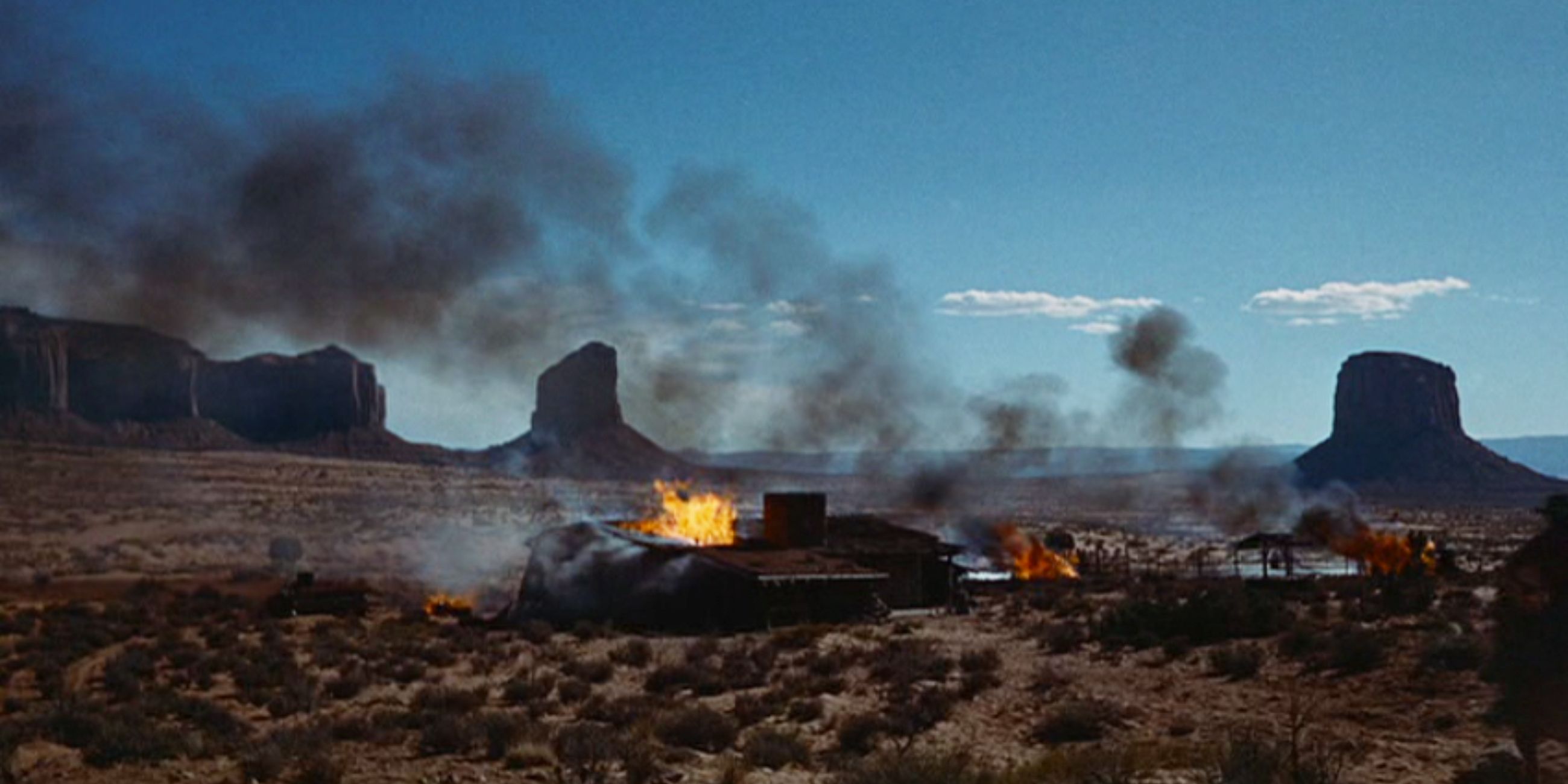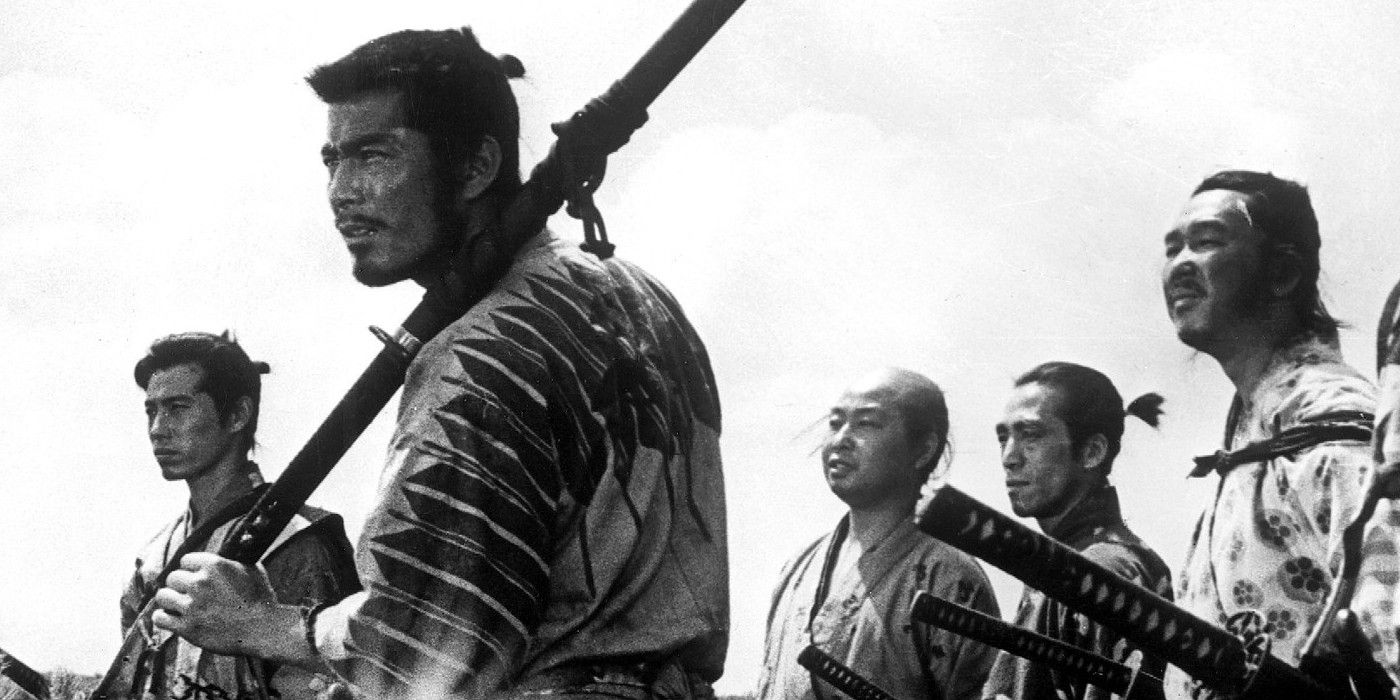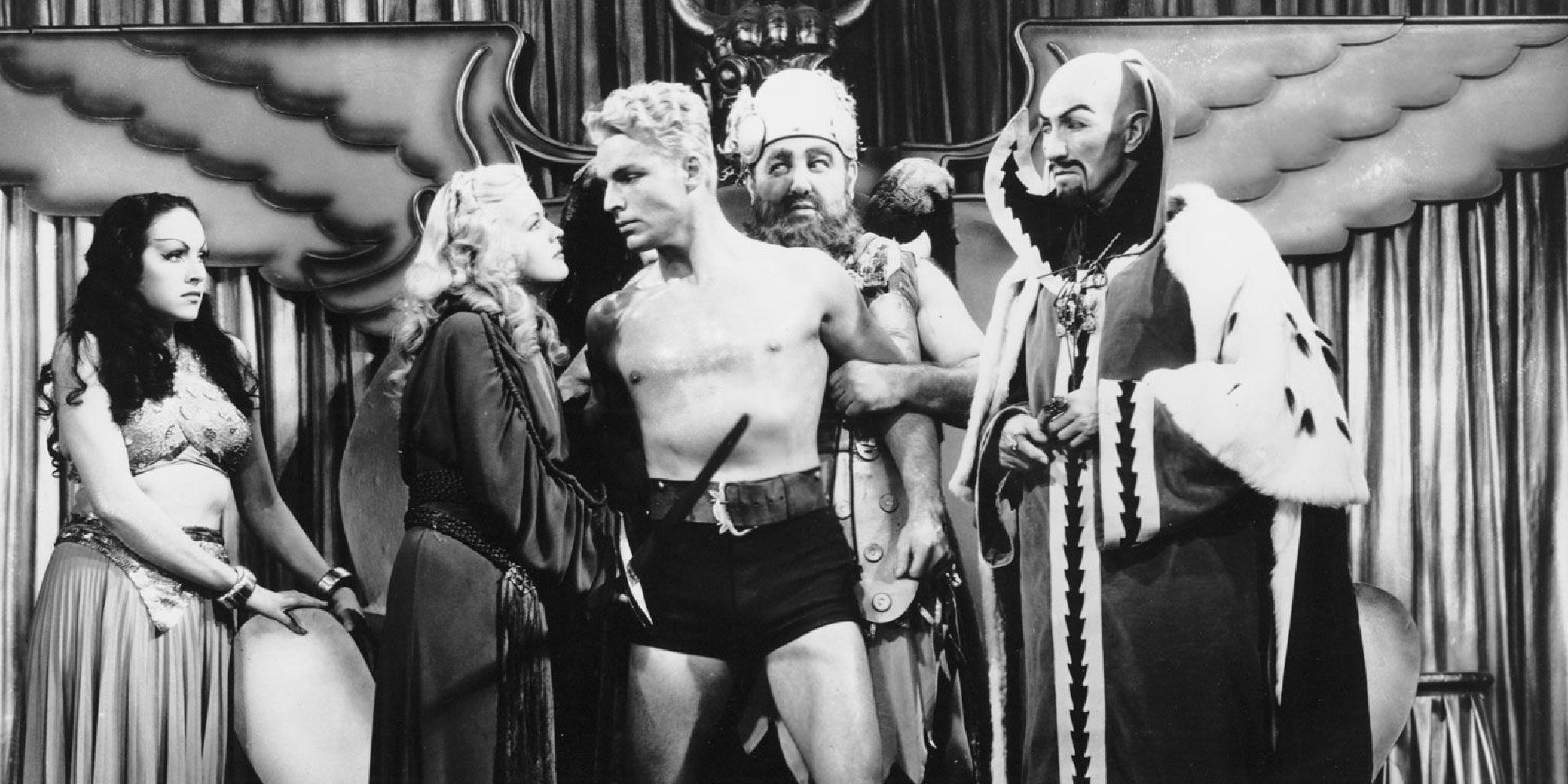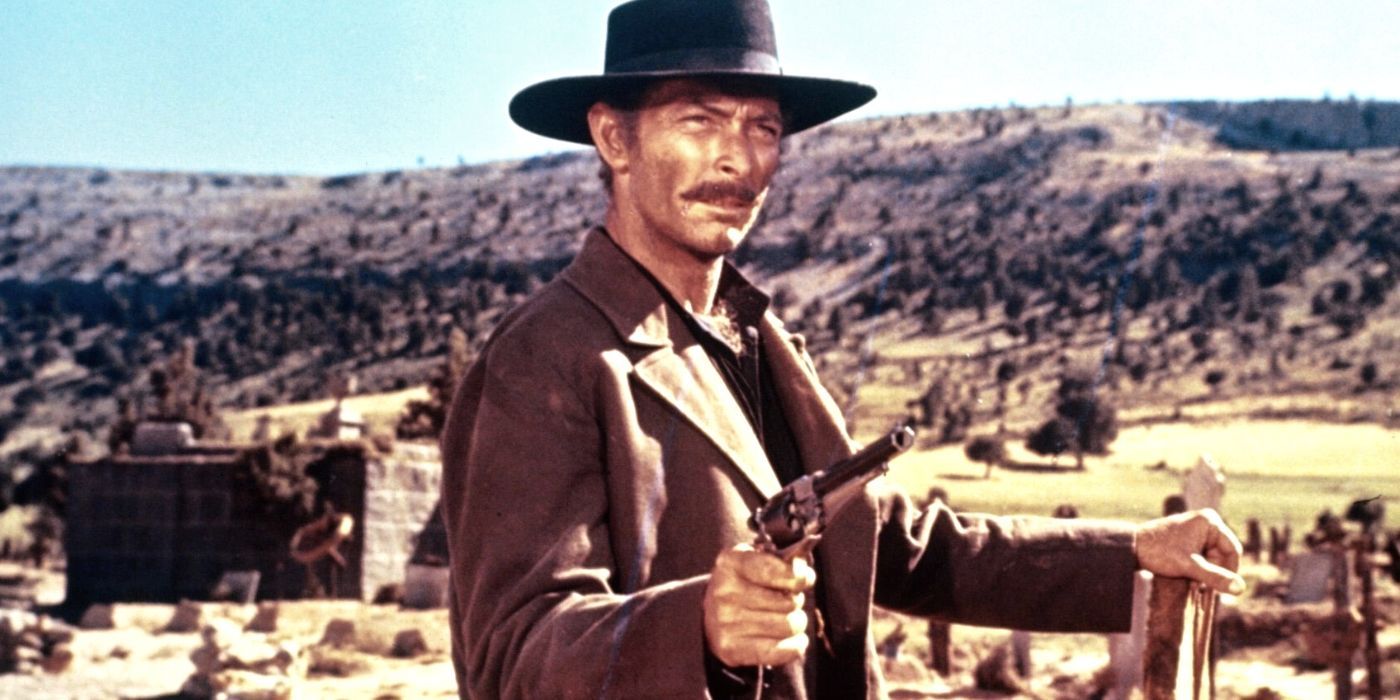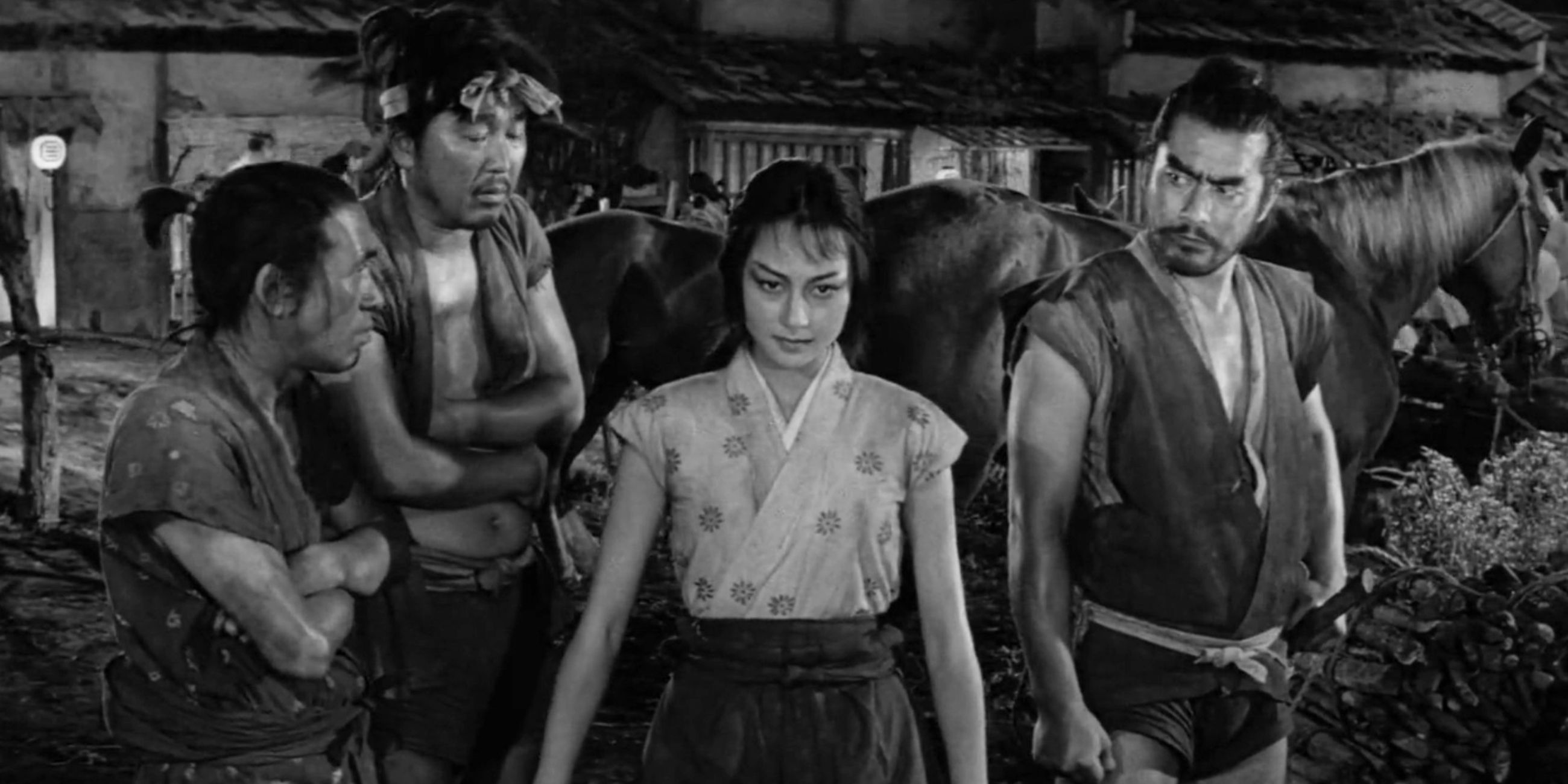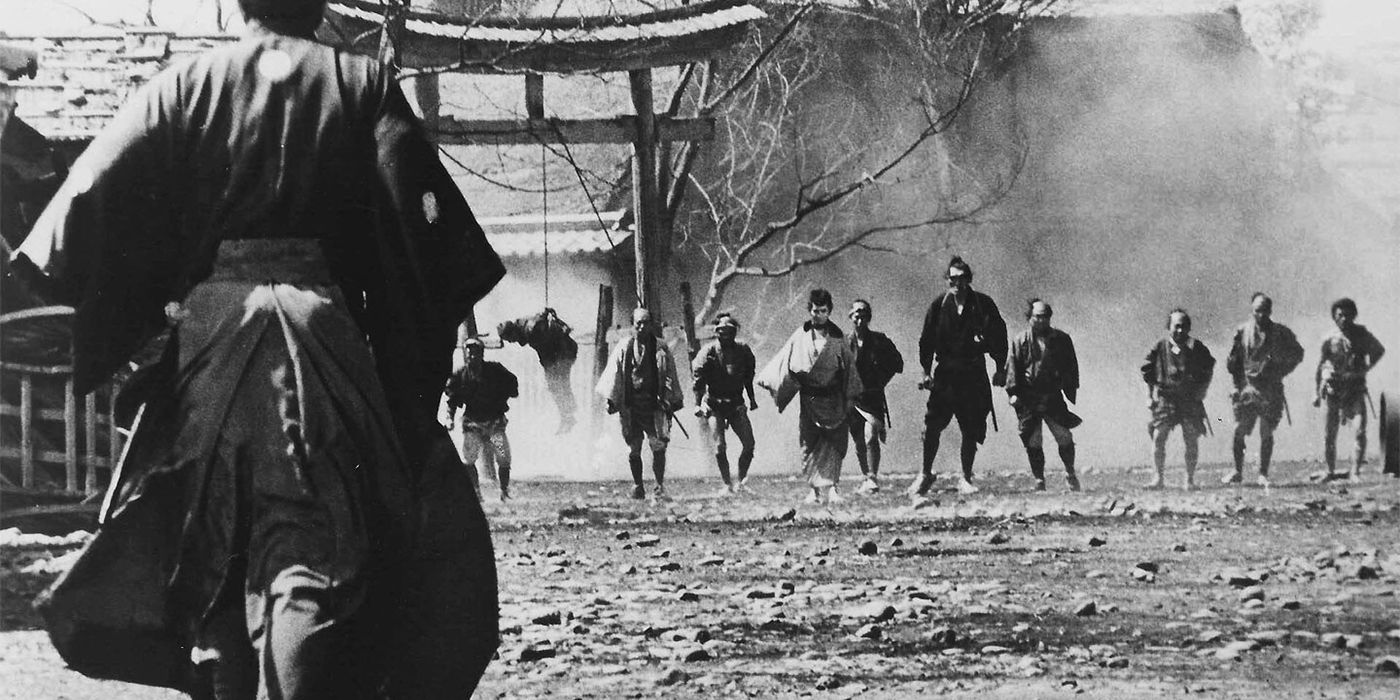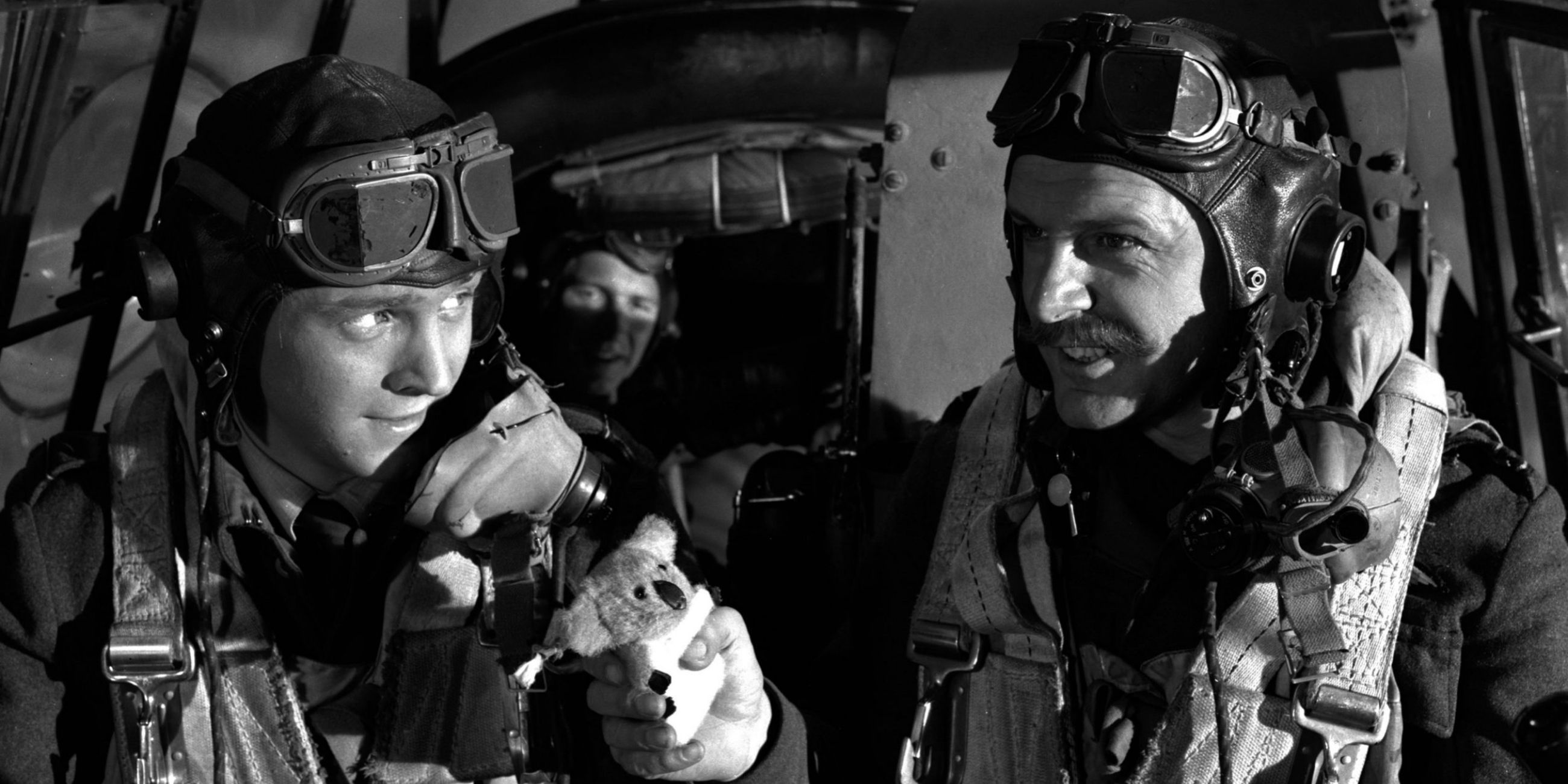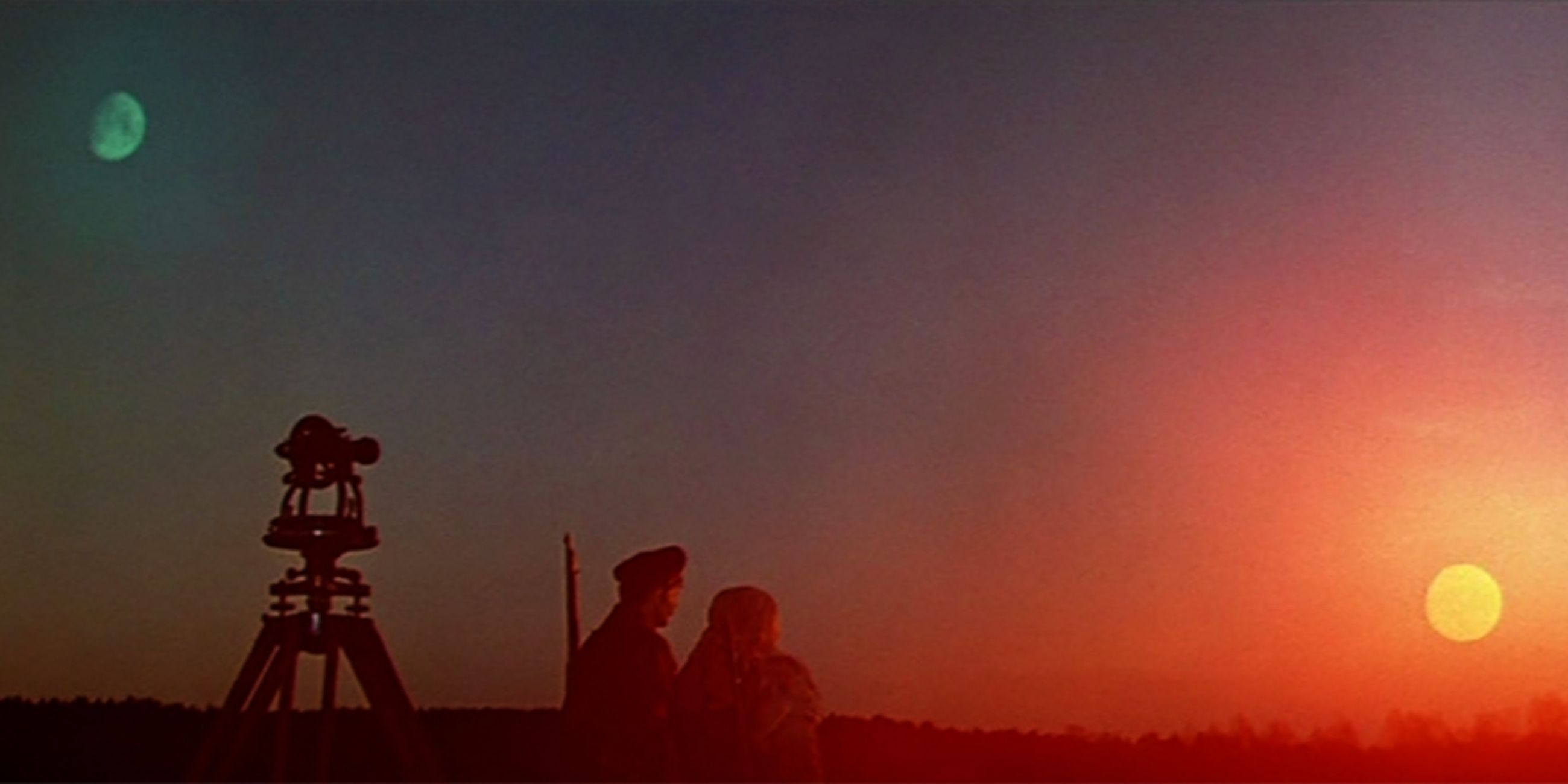Seen through both references and parodies, the Star Wars series has had a clear influence on cinema as a whole since the first movie was released a long time ago (1977), in… well, our galaxy (the Milky Way). That first film is also influential in terms of blockbuster movies as a whole, and it kicked off a great trilogy that branched out further in the decades since, with a prequel trilogy, a sequel trilogy, and too many video games/TV shows/other pieces of media to count.
But Star Wars didn’t come out of nowhere. Though it’s unique and unequivocally its own thing, series creator George Lucas wasn’t afraid to draw from various classic movies when it came to crafting that first film, in 1977. It’s no secret, but the key thing was taking inspiration from a variety of movies – including sci-fi flicks, Westerns, samurai movies, and war films – and mixing them into something distinctive. The following movies showcase this range, relating specifically to the first Star Wars, which, of all the films in the series, arguably has the most direct references and parallels to pre-existing movies.
10 'Metropolis' (1927)
Director: Fritz Lang
To start things off nice and simple, Metropolis is an ambitious sci-fi film that features a humanoid robot known as the Maschinenmensch, and before it takes on a more human form (disguising itself as the more heroic Maria), it has a certain resemblance to C-3PO. Additionally, though Metropolis is in black and white, the posters for the film often make the Maschinenmensch look golden, which C-3PO also is, of course.
Otherwise, Metropolis is a fairly different sort of sci-fi movie to Star Wars, being less about adventure and a little more grounded, as far as science fiction goes (with Star Wars being more of a space opera). However, Fritz Lang, the director of Metropolis, would helm another classic silent sci-fi film that was more about space travel and adventuring, 1929’s Woman in the Moon.
In a divided futuristic city, a powerful leader’s son learns from a prophet about a coming savior meant to unite the rich and poor.
- Release Date
- February 6, 1927
- Director
- Fritz Lang
- Cast
- Alfred Abel , Gustav Fröhlich , Rudolf Klein-Rogge , Fritz Rasp , Theodor Loos , Erwin Biswanger
9 'The Searchers' (1956)
Director: John Ford
It’s one thing to take inspiration from classic science fiction movies when making a space opera, but it’s more interesting to also pull from less-expected genres like Westerns, too. It makes some sense, given how the original Star Wars begins on the desert planet of Tatooine, and deserts just so happen to be where the majority of classic Westerns take place.
Beyond broadly pulling from the look of Westerns like The Searchers, Star Wars has a more explicit shout-out to that iconic John Ford/John Wayne film. In The Searchers, there’s a scene where Wayne’s character, Ethan Edwards, finds his family home has been burned to the ground, and in Star Wars, Luke Skywalker stumbles upon a similar sight. In both cases, these events help kick off the main narratives of each respective film.
The Searchers
- Release Date
- May 26, 1956
- Director
- John Ford
- Cast
- John Wayne , Jeffrey Hunter , Vera Miles , Ward Bond , Natalie Wood
- Runtime
- 119 minutes
8 'Seven Samurai' (1954)
Director: Akira Kurosawa
George Lucas is clearly a fan of Akira Kurosawa, because there are several films of the director’s that influenced Star Wars to some extent. Further, Lucas became associated with Kurosawa more directly after Star Wars, as Lucas was credited with being an executive producer for 1980’s Kagemusha, in turn allowing it to get more exposure on an international scale (or at least outside Japan).
And why not take influence from Kurosawa? He was one of the best, after all, and debatably, Seven Samurai was his crowning achievement. Star Wars has a similar level of action/excitement, the Jedi feel somewhat like space samurai, there are some broadly comparable characters, and was almost tied to Seven Samurai more explicitly. This is thanks to George Lucas being particularly fond of Toshirô Mifune’s performance in the film, and offering him roles in the original Star Wars as a result; first, the role of Obi-Wan Kenobi, and later, Darth Vader.
Seven Samurai
- Director
- Akira Kurosawa
- Cast
- Toshiro Mifune , Takashi Shimura , Kamatari Fujiwara , Daisuke Katô , Yukiko Shimazaki , Isao Kimura , Minoru Chiaki
- Runtime
- 207 Minutes
7 'Flash Gordon' (1936)
Directors: Frederick Stephani, Ray Taylor
This is a bit of a tricky example, given it’s not a feature film in the traditional sense, instead being a film serial. Think of it as a miniseries before television was properly a thing, with this serial, Flash Gordon, having 13 chapters that were screened alongside feature film presentations. The total runtime ends up being just over four hours, so it can technically be smashed out in one sitting, much like you could with an epic movie.
Flash Gordon is pure sci-fi/adventure goodness, feeling cheesy at times but also being broad in a way that was undoubtedly fun back in the 1930s, and still feels charming when watched in the 2020s. Various tropes and conventions associated with the space opera genre pop up here, with the almost fantastical feel of it all (owing to it not exactly being “realistic” sci-fi) also feeling influential for Star Wars.
Flash Gordon, Dale Arden and Dr. Alexis Zarkov visit the planet Mongo to thwart the evil schemes of Emperor Ming the Merciless, who has set his planet on a collision course with Earth.
6 'The Good, the Bad and the Ugly' (1966)
Director: Sergio Leone
The Good, the Bad and the Ugly is perhaps even more iconic as a Western than The Searchers. If that 1956 film represents the American Western at its best, then Sergio Leone’s 1966 epic represents the spaghetti Western at its best. That being said, The Good, the Bad and the Ugly isn't quite as explicitly referenced by Star Wars, but there are hints here and there if you know where (and how) to look.
There’s a long portion of two characters walking aimlessly through a desert in both, admittedly for very different reasons (C-3PO and R2-D2 in the opening act of Star Wars, and Tuco tormenting Blondie in The Good, the Bad and the Ugly). Also, one of the best scenes in The Good, the Bad and the Ugly sees a charismatic antihero (Tuco, who’s a lovable rascal) unafraid to shoot first, and Han Solo infamously did the same… at least in the original version of the film.
- Release Date
- December 23, 1966
- Director
- Sergio Leone
- Cast
- Eli Wallach , Clint Eastwood , Lee Van Cleef , Aldo Giuffrè , Luigi Pistilli , Rada Rassimov
- Runtime
- 161
5 'The Hidden Fortress' (1958)
Director: Akira Kurosawa
More so than Seven Samurai, Akira Kurosawa’s The Hidden Fortress is the film of his that gets most often compared to Star Wars, thanks to some character and narrative parallels. Those expecting Star Wars to be an unofficial remake of The Hidden Fortress might find such parallels overstated, but this speaks to George Lucas taking just what he needed from one film and its writing, and not being greedy. Greed leads to plagiarism, plagiarism leads to anger, anger leads to lawsuits, as Yoda might say.
Another great samurai/historical adventure/drama film by Kurosawa, The Hidden Fortress starts by following two peasants who likely inspired the dynamic between C-3PO and R2-D2. They stumble across two other characters wrapped up in a bigger conflict; one a princess (like Princess Leia) and the other a warrior (somewhat similar to Obi-Wan Kenobi). Beyond the characters, there are various other similarities; enough to fill an entire article, in fact.
The Hidden Fortress
- Release Date
- October 6, 1960
- Director
- Akira Kurosawa
- Cast
- Toshiro Mifune , Minoru Chiaki , Kamatari Fujiwara , Susumu Fujita , Takashi Shimura , Misa Uehara , Eiko Miyoshi , Toshiko Higuchi
- Runtime
- 126 Minutes
- Main Genre
- Adventure
4 'Battle in Outer Space' (1959)
Director: Ishirô Honda
There is an inherent B-movie quality to the writing of Star Wars, though that’s not a dig by any means, because B-movies can be awesome. Plus, Star Wars, of course, doesn’t look reminiscent of B-movies, with pulpy storylines getting inevitably elevated by special effects that were revolutionary for their time, and still generally hold up decades later (as far as the original trilogy is concerned).
Purely B-movie fare, however, can be found in Battle in Outer Space, which is slow and a little sluggish, but has its moments, particularly when it comes to some action sequences and special effects usage. It’s those elements from Battle in Outer Space that feel like they could’ve influenced the climactic action set piece in 1977’s Star Wars, which itself depicts a battle in outer space, but in a way that feels more immersive and visceral.
3 'Yojimbo' (1961)
Director: Akira Kurosawa
Yojimbo is one of the most purely enjoyable Akira Kurosawa movies, and was followed by an equally good (and somewhat more comedic) sequel in the form of 1962’s Sanjuro. Both can be seen to have some level of influence on Star Wars, given they’re Kurosawa movies that deal with samurai to some extent, but it’s Yojimbo that gets the most explicit shout-out in the original Star Wars.
In the cantina scene, there’s an unusually graphic shot that follows Obi-Wan cutting off someone’s arm with a lightsaber, with the limb being shown on the ground to emphasize the power these unusual weapons have (remember, they were rather novel back in 1977). The main character of Yojimbo also demonstrates his proficiency with a sword by taking on some thugs and slicing one of their arms off, complete with a similar close-up of the severed arm lying bloodied on the ground.
- Release Date
- April 25, 1961
- Director
- Akira Kurosawa
- Cast
- Toshiro Mifune , Tatsuya Nakadai , Yôko Tsukasa , Isuzu Yamada , Daisuke Katô , Seizaburô Kawazu
- Runtime
- 110 minutes
2 'The Dam Busters' (1955)
Director: Michael Anderson
Though the Death Star attack scene near the end of Star Wars might've been referencing Battle in Outer Space to some extent, it was riffing on The Dam Busters more explicitly. This is despite The Dam Busters being a relatively grounded World War II movie that had quite the emphasis on historical accuracy, particularly for a film of its era.
Like Star Wars, The Dam Busters also builds to an action scene in the air for its climax, depicting Operation Chastise (1943), which involved _targeting and destroying several German dams to weaken the nation’s war efforts. There are similarities when it comes to pacing and editing for the two sequences in each respective movie, not to mention having some structural similarities in placing these big scenes right near the end of both films.
1 'Dersu Uzala' (1975)
Director: Akira Kurosawa
One final Akira Kurosawa movie worth mentioning is a non-samurai film, and one that came out just two years before Star Wars was released: Dersu Uzala. It’s something of an oddity within Kurosawa’s filmography for a couple of key reasons. One is that the film was a co-production between the USSR and Japan, complete with Russian dialogue, and the other is that it’s a historical adventure movie, but not one that went back to samurai times, given that Dersu Uzala is set in the early 1900s.
There’s one particularly striking scene in Dersu Uzala that mirrors one of the most famous images from the original Star Wars. In Kurosawa’s film, there’s a shot of characters observing the visible moon and the setting sun at the same time, while in Lucas’s film, there’s the iconic shot of Luke watching the binary sunset on Tatooine. Beyond that, it’s also been observed how Dersu Uzala might've had more of an influence on The Empire Strikes Back, but that’s a story for another time.
Dersu Uzala
- Release Date
- August 2, 1975
- Director
- Akira Kurosawa
- Cast
- Maxim Munzuk , Yury Solomin , Vladimir Kremena , Alexander Pyatkov , Svetlana Danilchenko , Suimenkul Chokmorov
- Runtime
- 144 Minutes


